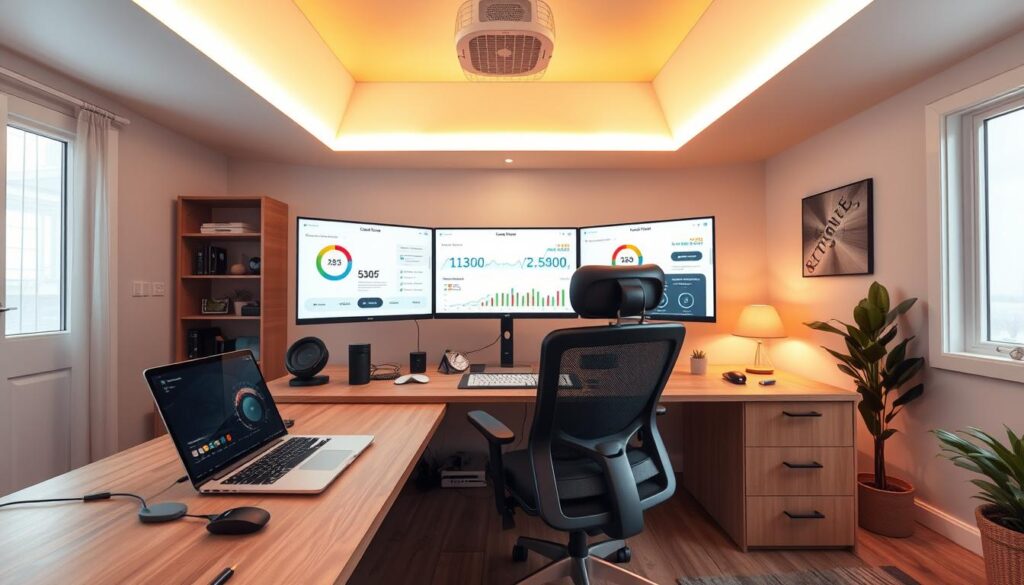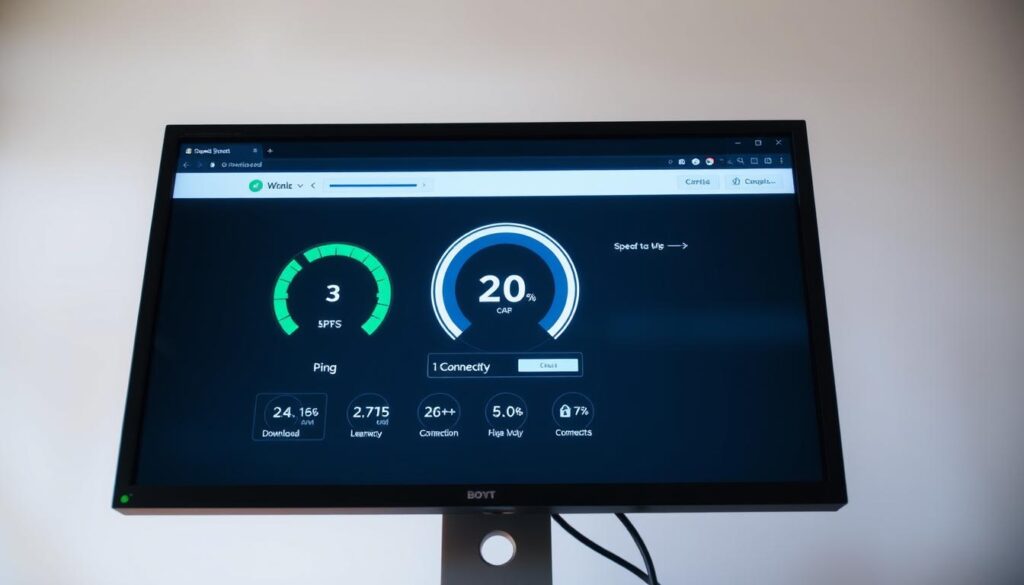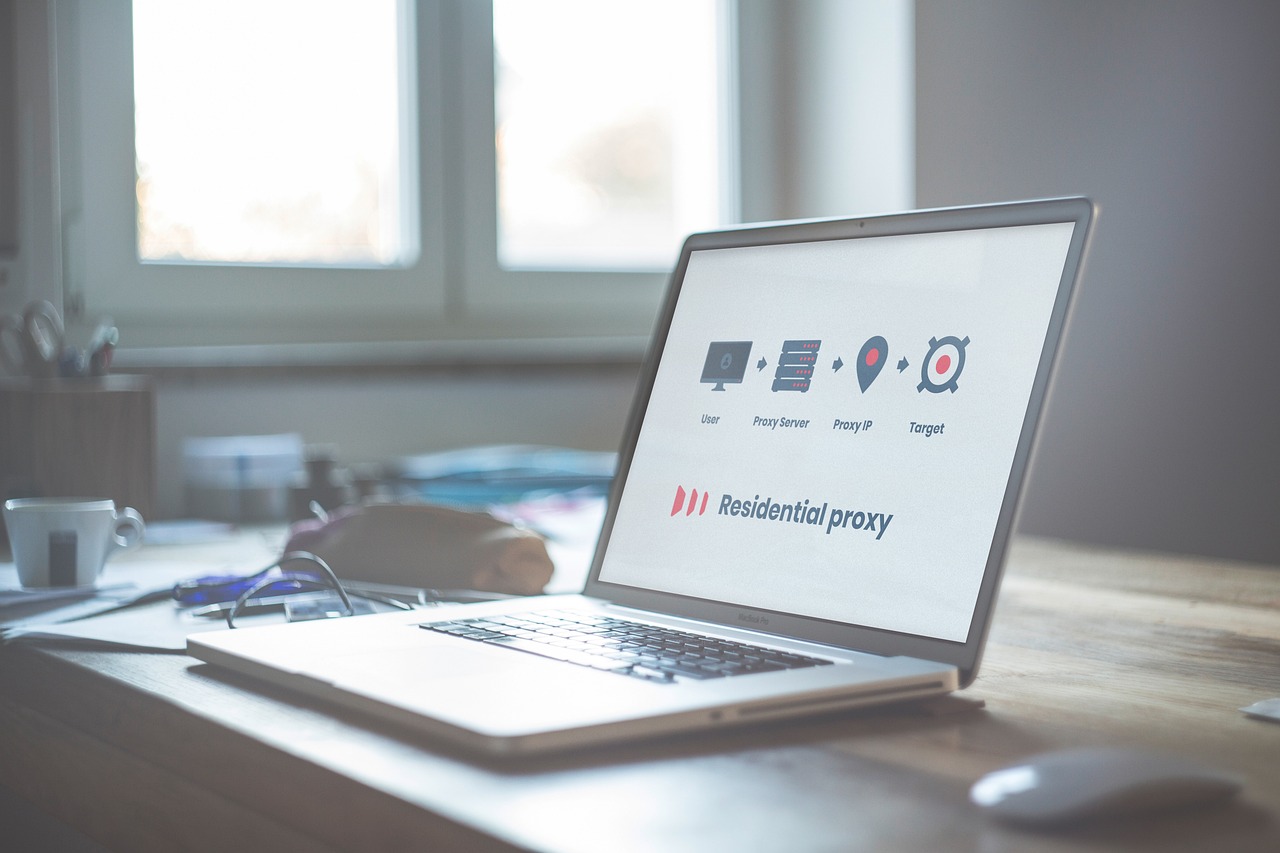In today’s digital world, internet speed is key to a good online experience. Whether you’re watching your favorite shows, working from home, or playing games with friends, the right download and upload speeds are a must.
With more online activities, knowing your internet speed needs is important for a smooth experience. For example, watching HD videos needs faster speeds than just browsing websites.
Exploring the world of online activities shows how important broadband is in our daily lives.
Key Takeaways
- Understanding internet speed needs is key for a smooth online experience.
- Different online activities need different download and upload speeds.
- Broadband is vital for the quality of our online experiences.
- The right internet speed is essential for streaming, gaming, and remote work.
- Internet speed needs change based on the online activity.
Understanding Internet Speed Basics
The world of internet speeds can seem complex. But knowing the basics helps you make smart choices online.
What Internet Speed Actually Means
Internet speed is how fast data moves online. It affects how quickly you can open websites, watch videos, and download files.
Bandwidth vs. Throughput
Bandwidth is the max data you can send over the internet at once, in megabits per second (Mbps). Throughput is how much data actually gets through.
Latency and Ping Explained
Latency, or ping, is how long data takes to get from you to a server and back. A low ping means a fast, responsive internet, great for gaming.
Download vs. Upload Speeds
Download speed is how fast data comes to you from the internet. Upload speed is how fast you send data to the internet. Download speeds are usually more important, but upload speeds matter for video calls.
Common Speed Measurements Explained
Internet speeds are usually in Mbps (megabits per second). It’s key to know the difference between Mbps and MBps (megabytes per second).
Mbps vs. MBps: The Important Difference
Mbps is the speed of data transfer in megabits per second. MBps is in megabytes per second. So, 100 Mbps is the same as 12.5 MBps.
The Current State of Internet Speeds in America
To understand internet speeds in America, we need to look at several key points. The country’s internet setup is complex. Speeds vary greatly from one area to another.
Average Internet Speeds Across the US
The average internet speed in the US has been going up. Recent reports show it’s now around 150 Mbps.
FCC Broadband Definition and Benchmarks
The FCC says broadband needs a download speed of 25 Mbps and an upload speed of 3 Mbps. But many think this is too low for today’s users. They believe a higher speed is needed.
Urban vs. Rural Speed Disparities
There’s a big difference in internet speeds between cities and rural areas. Cities usually have much faster speeds than rural places.
How US Speeds Compare Globally
The US is among the top countries for internet speeds. But, there’s room to get even better. The cost of internet in the US is also a concern.
Key Statistics from Global Speed Rankings
In global speed rankings, the US ranks 12th. Here are some important stats:
| Country | Average Internet Speed (Mbps) |
|---|---|
| Singapore | 220.58 |
| Hong Kong | 213.85 |
| United States | 151.86 |
How Much Internet Speed Do I Need? A Practical Guide
Figuring out how much internet speed you need is key for a smooth online experience. The speed needed depends on several factors. These include the number of devices, the type of online activities, and the number of users.
Basic Speed Requirements for Common Activities
Different online activities need different internet speed requirements. For example, browsing and emailing need little speed. But streaming and online gaming require more.
- Basic browsing: 1-5 Mbps
- Streaming SD video: 3-5 Mbps
- Streaming HD video: 5-8 Mbps
- Streaming 4K video: 25 Mbps
- Online gaming: 50-100 Mbps
Essential Speed Thresholds Chart
| Activity | Minimum Speed Required |
|---|---|
| Browsing & Email | 1-5 Mbps |
| SD Streaming | 3-5 Mbps |
| HD Streaming | 5-8 Mbps |
Calculating Your Household’s Combined Needs
To figure out your household’s needs, think about the number of devices and users. More devices and users mean you need more speed. For example, a home with many streamers and gamers might need 100 Mbps or more.
When More Speed Doesn’t Equal Better Performance
At times, more internet speed doesn’t make things better. This is often because of bottlenecks in the network. Finding and fixing these bottlenecks is important.
Identifying Your Actual Bottlenecks
Common bottlenecks include old routers, bad Wi-Fi coverage, and ISP throttling. Checking your network regularly can help find and fix these problems. This ensures you get the best from your internet plan.
“The internet is not just a network, it’s a lifeline to information, entertainment, and communication.”
By knowing your internet needs and tackling bottlenecks, you can make your internet experience better.
Internet Speed Requirements by Activity
Internet speed needs change a lot depending on what you’re doing online. Knowing these needs is key for a good online experience.
Browsing and Email
For simple tasks like browsing and email, you don’t need much speed. A speed of 1-3 Mbps is enough for these activities.
Streaming Video (SD, HD, 4K)
Streaming videos need more speed. The speed needed depends on the video quality. SD needs 3 Mbps, HD needs 5-8 Mbps, and 4K needs at least 25 Mbps.
Platform-Specific Requirements
Each streaming service has its own speed needs. For example, Netflix says 3 Mbps for SD, 5 Mbps for HD, and 25 Mbps for 4K. YouTube and Amazon Prime Video also have specific requirements for 4K content.
Online Gaming
Online gaming needs fast speeds and low latency. A speed of 3-6 Mbps is good for most games.
Latency vs. Bandwidth for Gamers
Bandwidth is important for downloading game data. But for smooth gaming, latency (ping rate) is more critical. Aim for a latency under 50 ms for the best experience.
Video Conferencing
Video calls need stable and fast internet. The speed needed depends on the video quality.
Quality Settings and Bandwidth Usage
For standard video calls, 1-2 Mbps is enough. But for high-definition calls, you might need 4-6 Mbps per user.
| Activity | Minimum Speed Required |
|---|---|
| Browsing & Email | 1-3 Mbps |
| SD Streaming | 3 Mbps |
| HD Streaming | 5-8 Mbps |
| 4K Streaming | 25 Mbps |
| Online Gaming | 3-6 Mbps |
| Video Conferencing (HD) | 4-6 Mbps |
The table shows different activities need different speeds. Make sure your internet plan meets these needs for a smooth online experience.
Multiple Users and Devices: Calculating Household Needs
As more devices connect in homes, knowing how they affect internet speed is key. With more devices online, bandwidth demand rises. It’s vital to accurately figure out your household’s internet needs.
How Multiple Devices Affect Speed Requirements
Having many devices in a home changes what internet speed you need. Each device, like a phone, laptop, or smart TV, takes up some bandwidth. It’s important to know how each device affects your internet use.
Device Counting Methodology
To figure out your internet needs, count all devices that will use the internet at once. This includes phones, laptops, desktops, smart TVs, gaming consoles, and more.
Simultaneous Usage Considerations
It’s not just the number of devices that counts, but how they’re used. Streaming, gaming, and video calls need more bandwidth than just browsing or emailing. Knowing how your devices are used at the same time is key.
Peak Usage Calculator
To make it easier, use a peak usage calculator. This tool estimates your internet needs based on devices and their use.
“Using a peak usage calculator can help you avoid underestimating your internet needs, ensuring a smoother online experience for all users.”
Planning for Peak Usage Times
Evenings when everyone’s home need more bandwidth. Adjusting your internet plan or managing device use can help keep connections stable. Make sure important tasks get done during busy times.
Work From Home Speed Requirements
Working from home has made fast and reliable internet very important. As more people work from home, they need good internet speeds.
Basic vs. Data-Intensive Remote Work
Remote work includes simple tasks like emailing and complex tasks like video calls. The speed needed depends on the task. Simple tasks need speeds of 1-5 Mbps, while complex tasks need more.
Video Conference Quality Requirements
Video calls are a big part of remote work. Each platform has its own quality needs. A fast and stable internet is key for smooth video calls.
Platform Comparison: Zoom, Teams, and Google Meet
Popular video call platforms have different speed needs. For example, Zoom needs 1.5 Mbps for standard video, while Google Meet needs 3 Mbps for HD.
| Platform | Minimum Speed Required |
|---|---|
| Zoom | 1.5 Mbps |
| Microsoft Teams | 1 Mbps |
| Google Meet | 3 Mbps |
VPN and Security Considerations
VPNs can slow down your internet because of encryption. But, they are important for safe remote work.
How VPNs Impact Speed Performance
VPNs can slow your internet by up to 50%. It depends on the VPN and where it is. Choosing a VPN that doesn’t slow you down is important.

Streaming and Entertainment Speed Needs
In today’s digital age, streaming services need a certain internet speed to work well. This section will look into those needs.
Speed Requirements by Streaming Service
Different streaming services need different internet speeds. This depends on the quality of the content they stream. For example, Netflix suggests:
- 3 Mbps for SD quality
- 5 Mbps for HD quality
- 25 Mbps for Ultra HD quality
Netflix, Hulu, Disney+, and YouTube Compared
Let’s compare the speed needs of popular streaming services:
| Streaming Service | SD Quality | HD Quality | 4K/Ultra HD |
|---|---|---|---|
| Netflix | 3 Mbps | 5 Mbps | 25 Mbps |
| Hulu | 3 Mbps | 8 Mbps | 16 Mbps |
| Disney+ | N/A | 5 Mbps | 25 Mbps |
| YouTube | 0.5 Mbps | 2.5 Mbps | 53.4 Mbps |
Multiple Streams in One Household
Households with many streams need a lot more internet speed. It’s important to calculate combined streaming needs to avoid buffering and ensure a smooth experience.
Calculating Combined Streaming Needs
To find the total speed needed, add up the speed needs of each device. For example, streaming HD content on two devices at once using Netflix needs at least 10 Mbps (5 Mbps per device).
Smart TV and Streaming Device Considerations
The type of device used for streaming also affects internet speed needs. Smart TVs and streaming devices like Roku or Chromecast can stream content at different qualities. This affects the overall speed needed.
By knowing the specific speed needs for your streaming services and devices, you can ensure a smooth entertainment experience.
Testing and Troubleshooting Your Internet Speed
Knowing your internet speed is key for a smooth online experience. Whether you’re working from home, streaming shows, or gaming, the right speed matters a lot.
Reliable Speed Testing Tools
To get an accurate internet speed, you need good testing tools. Here are some popular ones:
- Speedtest.net by Ookla
- Fast.com by Netflix
- Google’s Measurement Lab
How to Conduct an Accurate Speed Test
To test your speed right, follow these steps:
- Use a device plugged directly into your router with Ethernet.
- Close all apps that use a lot of bandwidth.
- Go to your chosen speed testing website.
- Run the test a few times to check if the results are the same.
Understanding Your Speed Test Results
After running your speed test, it’s important to understand the results. Look for:
- Download speed
- Upload speed
- Ping (latency)
Interpreting Graphs and Statistics
Many speed testing tools show graphs and detailed stats. Pay attention to:
- How consistent the results are across tests
- How your speeds compare to national averages

Common Causes of Speed Problems
Slow internet speeds can come from many things, like:
| Cause | Impact | Solution |
|---|---|---|
| Router Placement | Weak signal strength | Move router to a central location |
| Outdated Hardware | Slow speeds, dropped connections | Upgrade your router and devices |
| ISP Throttling | Intentional speed reduction | Contact your ISP, consider a VPN |
Router Placement and Configuration Tips
To make your router work better:
- Put it in a central spot
- Avoid things that block the signal
- Keep your router’s firmware up to date
By following these tips, you can test and fix your internet speed. This will make your online experience smoother.
Choosing the Right Internet Plan
There are many internet service providers (ISPs) to choose from. It’s important to think carefully about your options. You should look at what different ISPs offer in your area.
Evaluating ISP Offerings
When comparing ISPs, don’t just look at the speeds they advertise. Actual speeds can vary a lot. This is because of things like how busy the network is and the quality of the infrastructure.
Comparing Advertised vs. Actual Speeds
ISPs often talk about the fastest speeds they can offer. But, you might not get those speeds. Reading reviews and doing your own speed tests can give you a better idea.
Hidden Limitations (Data Caps, Throttling)
Some ISPs have data caps, which limit how much data you can use each month. Others might slow down your speeds during busy times or for certain activities.
Reading the Fine Print
It’s important to understand the terms of service. Look for details on data caps, throttling, and any extra fees.
Cost vs. Speed Considerations
It’s all about finding the right balance between cost and speed. Faster speeds cost more, but you might not need them. Think about how much internet your household uses to decide on the best speed.
When to Upgrade or Downgrade
If you’re always going over your data limit or speeds are slow, it’s time to upgrade your plan. On the other hand, if you’re not using all your bandwidth, downgrading could save you money.
Conclusion: Making an Informed Decision About Your Internet Speed
Knowing what internet speed you need is key for a smooth online life. Think about how many devices you have, what you do online, and how many people use the internet at home. This helps figure out the best internet speed for your family.
Choosing the right internet plan means looking at what you need, checking what providers offer, and watching out for limits like data caps or throttling.
This article has given you the tools to pick an internet plan that fits your needs. Whether you love streaming, gaming online, or work from home, picking the right speed is vital. It helps you work better and enjoy your time online more.
With the right internet speed, you can enjoy your online activities without any hitches. You’ll get the most out of your internet connection.



